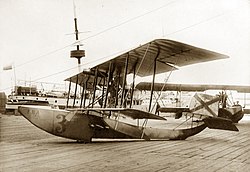| FBA Type A, B, and C | |
|---|---|
 | |
| General information | |
| Type | Reconnaissance flying boat |
| Manufacturer | FBA |
| Status | Retired |
| Primary users | France Aéronautique Maritime |
| Number built | ca. 250 |
| History | |
| Introduction date | 1912 |
| First flight | 1912 |
| Developed into | FBA Type H |
The FBA Type A and the similar Type B and C were a family of reconnaissance flying boats produced in France prior to and during World War I.



